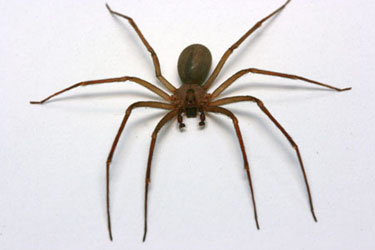Vanderbilt medical toxicologists are reporting an increase in patients seen with brown recluse spider bites this summer.
The venomous bites usually heal well if left alone, according to Tennessee Poison Center Medical Director Donna Seger, M.D., but there are so many urban legends about these bites, patients frequently apply many treatments before seeking medical advice.

There are two components to spider bites — the cutaneous lesion and, more rarely, the systemic symptoms that can occur following the bite. The syndrome known as systemic loxsoscelism consists of brown recluse spider bites accompanied by a fever, rash and muscle pain, with or without hemolysis. The hemolysis (breaking of red blood cell membranes) can be life threatening, especially in children, Seger said.
“Our recommendations are that all children under 12 years of age with a brown recluse spider bite should have a urine test for the presence of hemoglobin in blood, which indicates hemolysis,” Seger said.
“If the urine is positive for blood and/or the child has other signs of systemic loxsoscelism, the child should be admitted and observed for hemolysis. If the urine dip is negative, and there are no other signs of systemic loxsoscelism, the child should be seen by a physician the next day.”
If adults with a brown recluse spider bite do not have rash, fever or muscle pain, there is no need to do a urine test, Seger said.
“As physicians, it is hard for us to do nothing. The cutaneous lesion has classic characteristics, but if physicians are not familiar with this bite, the tendency is to debride and cut out the lesion. This actually slows the healing process and can result in disfigurement that would not occur if the lesion were left alone. Ointments, antibiotics and dapsone are not recommended. Ice works better than opiates for pain,” Seger said.
“We don’t know why systemic loxsoscelism occurs in some people with a brown recluse spider bite and not in others, but it is life-threatening and does require immediate medical attention. Toxin-induced hemolysis can occur very rapidly and therein lies the life threat, especially in children.”
The brown recluse spider, also known as the violin spider, is typically light to medium brown but can range in color from cream-colored to dark brown or blackish gray. It has six eyes instead of eight and can be identified by the violin-shaped marking on its back.












